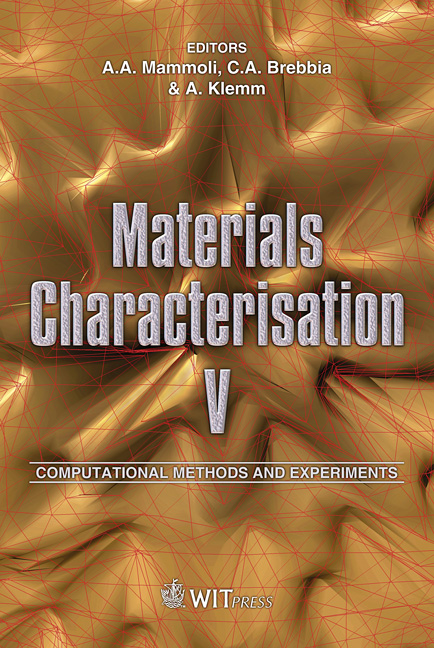Description Methods Of The Properties Of Composites From Oxybiodegradable Foil Waste And Wood
Price
Free (open access)
Transaction
Volume
72
Pages
9
Page Range
387 - 395
Published
2011
Size
1,098 kb
Paper DOI
10.2495/MC110341
Copyright
WIT Press
Author(s)
J. Ryszkowska & K. Sałasińska
Abstract
As part of this work oxydegradable polymer was fabricated and analyzed; it was made from the waste following a 30 day exposure in Xenotest, simulating a 2-year exposure in atmospheric conditions and undergoing a triple injection process. Similar examination was applied to composites containing 32 wt.% of wood fabricated from this polymer. In the course of the examinations two methods of degradation process evaluation of the materials were verified. It was stated that the method utilizing the relationship between peak fields originating from scissoring vibrations of the (-CH2-) group with a frequency of ca 1463cm-1 ensures more accurate results. The results of other examinations of the two groups of materials permit us to state that the manufacturing of composites with wood constitutes an interesting form of the utilization of oxybiodegradable polymers. Keywords: oxydegradable polyethylene, foil waste, recycling, wood. 1 Introduction According to the data by Plastics Europe, European association of plastics manufacturers, some 230 million tons of plastics were produced in 2009 in the world (55 million tons in Europe). About 50% of the materials constitute polymers intended for the packaging industry, of which 40% are polyolefines: polyethylene (PE-LD, PE-HD, PE-LLD) and polypropylene (PP). These polymers are made from petroleum-based synthetic polymers that do not degrade in a landfill or in a compost-like environment. However, increased use of synthetic packaging films has led to serious ecological problems. Several
Keywords
oxydegradable polyethylene, foil waste, recycling, wood





